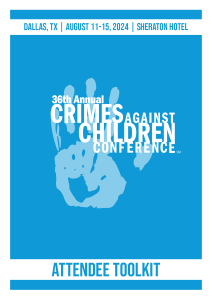Back
Workshop
On Demand
Using the CE-CERT Model to Reduce Secondary Trauma and Burnout (Part 2) ON DEMAND
ON DEMAND
Credit Hours: 1.25

Elena Doskey de Lobón
Director of Clinical Training
Dallas Children's Advocacy Center
Primary Presenter(s)
Traditional approaches to reducing secondary traumatic stress (STS) or burnout involve individuals engaging in restorative practices after work. For decades, this has been the approach and for decades, professionals in the trauma field continue to burnout or experience levels of STS that result in them leaving the field. Rather than waiting to recover exclusively after work, the Components for Enhancing Career Experience and Reducing Trauma (CE-CERT) model developed by Brian Miller, Ph.D. proposes micro-interventions done throughout the day, because jogging and journaling just ain’t enough. This presentation will provide an overview of the five skill domains (i.e., experiential engagement/feeling the feels, reducing rumination/stopping the spin, conscious narrative/assigning meaning to your story, reducing emotional labor/being energized by the work, and parasympathetic recovery/reset and recover.)
Learning Objectives:
- Compare CE-CERT’s philosophy to reducing secondary trauma and burnout with traditional approaches
- Summarize the five skill domains in the CE-CERT model
- Examine how to apply the CE-CERT skills throughout the workday

